Costock Conservation Area
Costock Conservation Area Appraisal and Management Plan January 2024
Contents
1.1 Conservation Areas
1.2 The Purpose of a Conservation Area Character Appraisal
1.3 The Planning Policy Context
2 Costock Location and Landscape Setting
3.1 Location and Historic Activities
3.2 Archaeology
3.3 Historical Mapping
4.1 Plan, Form and Layout
4.2 Landmarks, Focal Points and Views
4.3 Open Spaces, Trees and Landscape
4.3.1 Open Spaces, Trees and Landscape SWOT Analysis
4.4 Public Realm
5 Buildings of the Conservation Area and Key Characteristics
5.1 Building Types and Activity
5.1.1 Building types and Activity SWOT Analysis
5.2 Key Characteristics and Building Materials
5.2.1 Key Characteristics: Historic Core - Zone 1
5.2.2 Key Characteristics: Main Street - Zone 2
5.2.3 Key Characteristics: Loughborough Road and Old Main Road - Zone 3
5.2.4 Key Characteristics SWOT Analysis
5.3 Listed buildings
5.4 Key Unlisted Buildings
6.1 Introduction
6.2 National and Local Policies and Guidance
6.3 Article 4 Directions
6.4 Building Design
6.5 Publicity and Knowledge Transfer
6.6 Public Realm
6.7 Boundary Treatments
6.7.1 Walls and Fences
6.7.2 Hedges
6.8 Buildings at risk
6.9 Enforcement
7 Appendix 1 – Listed Buildings (as of January 2024)
8 Appendix 2 – Conservation Area Boundary and Townscape Appraisal Map
1 Introduction
1.1 Conservation Areas
Rushcliffe Borough Council has an obligation under Section 69 of the Planning (Listed Buildings and Conservation Areas) Act 1990 to review, from time to time, its Conservation Area designations.
A Conservation Area, as defined under Section 69, is ‘an area of special architectural or historic interest the character or appearance of which it is desirable to preserve or enhance’.
Costock Conservation Area was designated in 1990 as part of the Borough Council's proposals to create ten new Conservation Areas.
Prior to this reappraisal of January 2024, the Costock Conservation Area was reviewed in September 2009.
Section 71 of the Planning (Listed Buildings and Conservation Areas) Act 1990 highlights the local planning authority’s duty to formulate and publish proposals for the preservation and enhancement of the conservation areas. This document, therefore, aims to identify and
reaffirm (or redefine) the special architectural or historic interest of the area which warrants its designation.
Conservation Area Appraisals are not, and never have been, tools for to fossilise a place against change, instead, the processes of change which allow places to grow and evolve are recognised as being unavoidable, and it is also recognised that change can be a positive and desirable force. The designation instead allows greater scrutiny and control to manage change to positive effect and to ensure that any changes which require planning permission do not harm, and ideally serve to actively enhance, the existing character of the place.
Costock Conservation Area: Summary of Special Interest
Historic village core with medieval church and Elizabethan Manor House as focal points.
High brick boundary walls along roadsides.
Groups of mature trees throughout.
Mixture of traditional cottages and houses and modern infill development.
Eastern side of the Conservation Area separated from centre by Loughborough Road
1.2 The Purpose of a Conservation Area Character Appraisal
The purpose of a Conservation Area Character Appraisal is to:
- Identify and record the special interest of the Conservation Area to ensure there is public awareness and understanding of what is
worthy of preservation. - To define and reassess current boundaries to accurately reflect what is now perceived to be of special interest.
- To identify opportunities to safeguard and enhance the special interest of the Conservation Area.
It should be noted that the content in this document is not a comprehensive account of every significant building, structure, tree, wall, feature, or space. Therefore, any omission should not be assumed to imply that they are of no interest.
Generally, the character and appearance of a Conservation Area will be preserved or enhanced by:
- Providing controls and regulating development through the planning system.
- Applying the extra controls that designation provides over demolition, minor development, and the protection of trees.
- Environmental enhancement schemes and possibly providing financial assistance for the repair and restoration of specific buildings.
- Encouraging public bodies such as the local highways authority or utility companies to take opportunities to improve the street scene through the appropriate design and sensitive sighting of street furniture (and retention of historic features of interest), or the removal of eyesores and street features that have a negative impact such as overhead wires.
Costock Conservation Area: Summary of Key Issues
Development Pressures - Continuing proposals for residential infill development.
Highways and Transportation - The A60 currently separates the two sides of Costock. It detracts from the village’s rural character,
creates a noise disturbance, and poses a safety risk.
Cars parked on both sides of Main Street results in a zig-zagging path for vehicles. This becomes problematic, especially during peak times, school pick up and drop off times.
1.3 The Planning Policy Context
This appraisal provides a firm basis on which applications for development within the Costock Conservation Area would be assessed. It should be read alongside the wider development plan policy framework produced by Rushcliffe Borough Council and other
National Planning Policy Guidance documents. The relevant documents include:
- Rushcliffe Local Plan Part 1: Core Strategy, with a specific focus on:
- Policy 10 (Design and Enhancing Local Identity) [in part]
- Policy 11 (Historic Environment)
- Rushcliffe Local Plan Part 2: Development Policies, with a specific focus on:
- Policy 28 (Conserving and Enhancing Heritage Assets)
- Policy 29 (Development Affecting Archaeological Sites)
- The National Planning Policy Framework (NPPF) (Revised -2021)
- The National Planning Practice Guidance (2015 - Subject to Continual Review)
- By Design: Urban Design in the Planning System – Towards Better Practice (2000)
- The Planning (Listed Buildings and Conservation Areas) Act 1990
2 Costock Location and Landscape Setting
Rushcliffe Borough forms the southern tip of Nottinghamshire, which borders Leicestershire. It is predominantly a rural Borough that contains a mixture of city suburbs, market towns and villages. Rushcliffe is located about half a mile South of Nottingham city centre, with the River Trent forming the majority of its northern boundary and the River Soar defining its western boundary.
The A46, a distinctive Roman Road, runs through the centre of the Borough and leads to Newark in the North and Leicester in the South. In the northern half of the Borough, the A52 forms Nottingham’s primary transport link to Grantham and the East of England. Junction 24 of the M1 and East Midlands Airport are located about 1 mile from the western border.
Costock is situated in the south of the Borough on the A60 Loughborough Road. The village is situated in an elevated position in the Nottinghamshire Wolds Character Area and is surrounded by arable and pastureland. The neighbouring village of East Leake is situated less than a mile to the west along Leake Road while just over a mile to the south along the A60, lies the village of Rempstone.
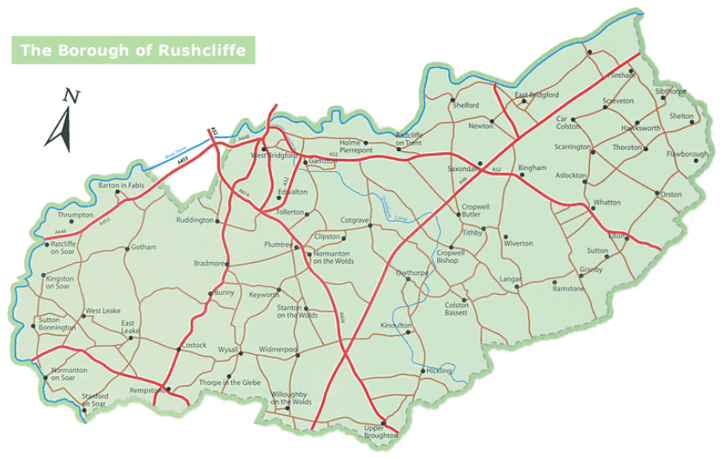
2.1 The Costock Conservation Area
Bounded by Church Lane and Chapel Lane, the Costock historic core is picturesque and has a genuine village feel with winding and secluded lanes, trees and high walls.
The church and Manor House stand close together, the latter being a charming Elizabethan stone house. The church of St Giles, on the other hand, has undergone major restoration in 1688, 1848 and 1862, although some of the original 14th century masonry, both internal and external, still remains.
The eastern part of the small Conservation Area (9.6 hectares) is separated from the remainder by Loughborough Road which tends to detract from the balance and unity of the village. The 7 Listed Buildings within the Conservation Area are somewhat dispersed. Highfields House, to the north of the village, bears the inscription "Sir T Parkyns AD 1729". This was the dower house to Bunny Hall.
- Conservation Area Boundary covers: 10.7 hectares (approximately)
- Number of Grade I listed buildings: 0
- Number of Grade II* listed buildings: 0
- Number of Grade II listed buildings: 7
A full list of Costock Conservation Area’s Listed buildings can be found in Appendix 1. Details accurate as of January 2024.
3 Historical Contexts
3.1 Location and Historic Activities
The village is recorded in the Domesday Survey of 1086 under the name of Cotingstoche, a combination of the Saxon owner’s name of Corting or Curtling and the word ‘stoche’ meaning seat or place. The Survey makes no mention of a church or priest in the village but it seems that by the 13th century the church of St Giles was in use as it still is to this day. Before the north aisle was added in 1848, the building was just a chancel and a nave and the bell hung in a box where the west window now is. The bell gable and other substantial alterations to the appearance of the building were the 1862 work of Sir Gilbert Scott. Today the only obviously medieval masonry in the building is a 14th century niche in the south wall.
There are two large houses of note in the village. The first is the 16th century stone Manor House which has a typical late medieval plan of two cross wings linked by a central hall. Later additions and alterations have not reduced the appeal of the building which Nikolaus Pevsner called “One of the most charming in the county” (The Buildings of England: Nottinghamshire). It is thought that the Manor was endowed with land and timber forest by Elizabeth I. The other noteworthy building is Hall Farmhouse, an early 17th century stone
and brick house which was allegedly linked to the Manor House by an underground tunnel.
In September 1644 the farmland to the south of Costock set the scene for a skirmish between Royalist and Parliamentarian forces during the English Civil War. A Parliamentarian supply convoy which was travelling from Nottingham to Leicester was ambushed on the road by a small Royalist force. The Royalists quickly lost the upper hand and were pursued eastwards over adjoining fields by the Parliamentarian escort. The engagement ended in eight Royalists killed and sixty captured. The event is recorded in the parish registers
of East Leake church where four of the casualties (two Royalist and two Parliamentarian) were buried under a slab near the porch.
For centuries Costock was largely an agricultural community and the remains of the pinfold, an enclosure for stray stock, is still a feature in the village. By the 19th century however, the growth of the domestic stocking frame industry reduced the village’s dependence on agriculture and caused the population of the village to double between 1801 and 1851. This rapid growth prompted the construction of the village’s first purpose-built school which has been in use as the village hall since 1975 when a new primary school was built next to it.
3.2 Archaeology
The discovery in the village of a Bronze Age, female skeleton at 3 Church Lane is thought to date to around 3000 BC. The skeleton provides archaeological evidence for there being a settlement at Costock long before the Norman invasion.
Several pieces of roman pottery and shards, dated between 43 AD and 409 AD were discovered by the Rector of Costock, whilst digging in the garden of the Rectory. The pieces were mostly grey ware, and a few pieces of tile.
3.3 Historical Mapping
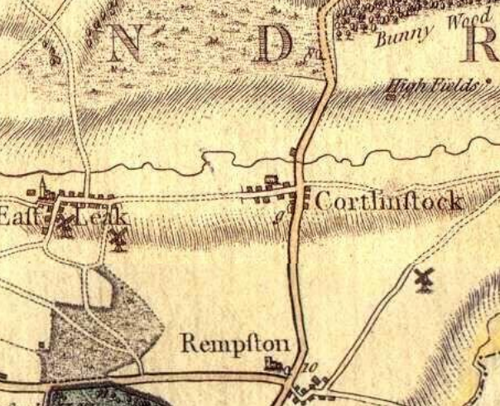

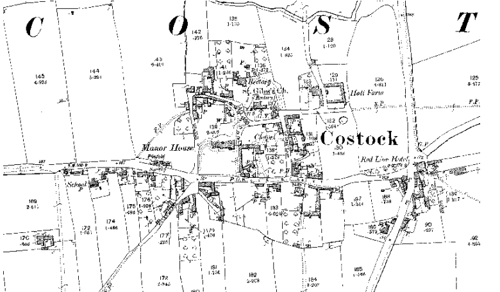
4 Spatial Analysis
The relationship between open spaces and the built form within a conservation area can be central to its character. This section describes the village’s layout, highlighting the significant views, landmarks and historical focal points. The contribution of open green spaces, trees and other natural elements to the conservation area’s character is also described within this section.
4.1 Plan, Form and Layout
Costock has a typical village layout of main roads and back lanes. Main Street, which leads to East Leake in the west, is the main artery from which the back lanes of Chapel Lane and Church Lane loop northwards and Millers Lane projects southwards.
In the east of the village, Main Street forms a crossroads with a section of Loughborough Road (A60) which was diverted to the west of the old turnpike route of Old Main Road. The latter of these effectively marks the eastern extent of the village.
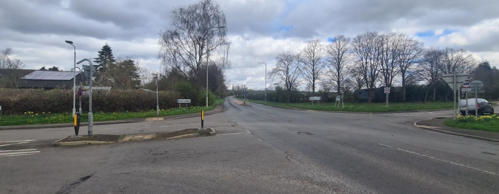
Throughout the village, whether along Main Street or along the back lanes, properties either face directly onto the highways (some may have a shallow enclosed frontage with a boundary wall (see Figure 6)), or are set back further behind higher brick boundary walls or hedgerows (see Figure 7).
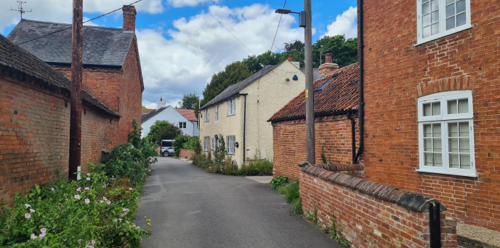
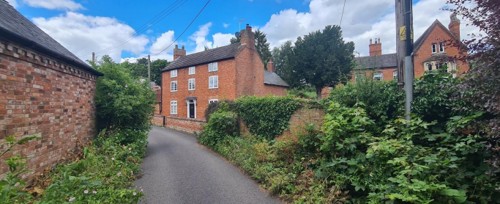
Below is a map that describes present day Costock. Note the redirection of Loughborough Road to the west and the presence of 20th century infill development to the west of Church Lane and east of Loughborough Road.
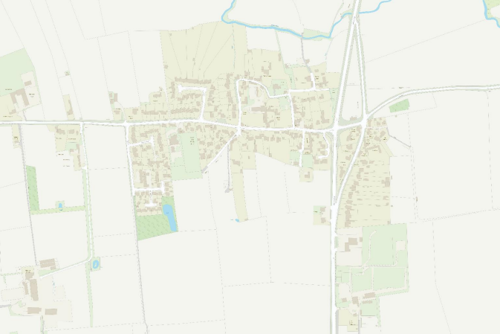
This map is reproduced from Ordnance Survey material with the permission of Ordnance Survey on behalf of the Controller of Her Majesty’s Stationary Office © Crown Copyright. Unauthorised reproduction infringes Crown Copyright and may lead to prosecution or civil proceedings. Rushcliffe Borough Council - 100019419
4.2 Landmarks, Focal Points and Views
While the village has no single focal point, there are various significant landmarks throughout. Most of the significant buildings of interest are located to the north of Main Street, on back lanes. The Church of St Giles is the most eye catching of these buildings, set in an open churchyard which is bordered by a brick wall (see Figure 9). The other two significant landmark buildings, Hall Farm and the Manor House are less visible, however. Hall Farm is tucked away behind a screen of vegetation in the northeast corner of the village while the Manor House, though its grounds dominate the central part of the village, is frequently obscured by its high brick boundary wall.
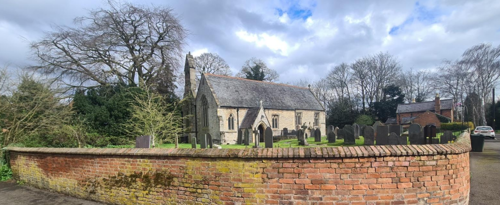
Other buildings of significance which also contribute to the character of the area and are are more easily seen include the White House and the Generous Briton Public House (see Figure 10), for example, feature strongly in views along Main Street. While views along Church Lane and Chapel Lane are also particularly attractive, the enclosed feel of the village allows for only occasional glimpses of the surrounding countryside.
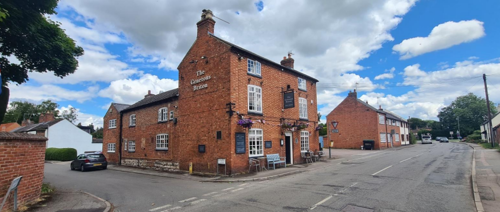
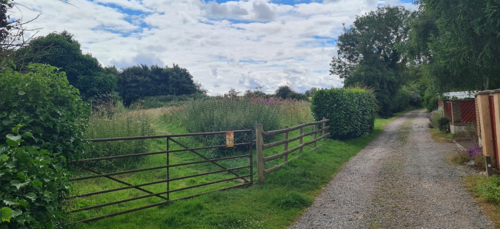
From Main Street, views of the open countryside are limited, but a short walk to Miller’s Lane offers an, unobstructed vista over fields and paddocks. These open views, rare in the area, provide a scenic glimpse into the countryside. (see Figure 11).
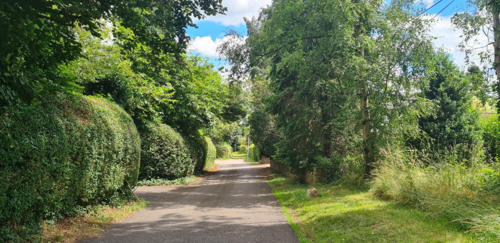
Appendix 2 - Conservation Area Boundary and Townscape Appraisal Map illustrates these key views and other views which link the village to the adjacent countryside.
4.3 Open Spaces, Trees and Landscape
There are very few public open spaces in the Conservation Area but many of the properties benefit from extensive and attractive private gardens. Trees are a prominent feature, especially in the historic core of the village, and hedgerows can also be found around the village where they are used to delineate property boundaries in place of brick walls.
While the land adjacent to the Pinfold is privately owned, it has been identified as Positive Open Space, contributing to the character of the area. The land is leased to the Parish Council and the village Christmas Tree is displayed on it.
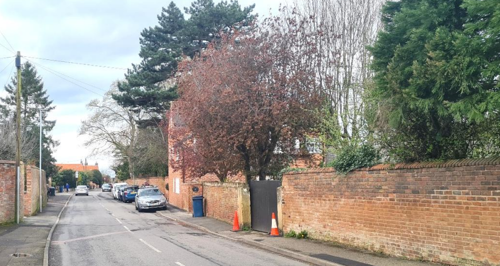
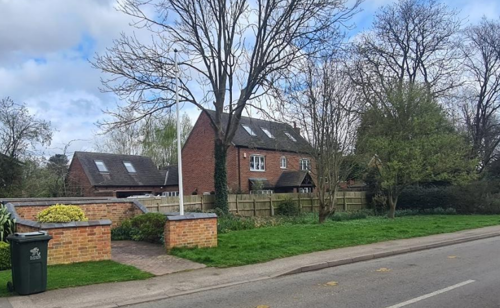
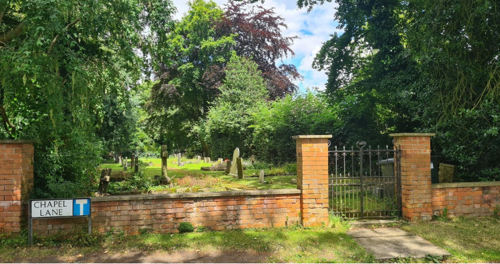
4.3.1 Open Spaces, Trees and Landscape SWOT Analysis
Strengths - what are the positives of the open spaces, trees, and landscape
- Beech hedge contributes strongly to the character of the corner of Main Street and Church Lane.
- Pinfold along with its bench.
- Mature trees in private gardens.
- Both the cemetery and Church Yard provide a pleasant and tranquil open space to sit and reflect.
- Grass verges in the area are well maintained and contribute to the character of the area.
Weaknesses - what are the negatives of the open spaces, trees, and landscape
- Not much open space.
- Rubbish around the bus stop on Loughborough Road due to inadequate waste disposal/bins.
Opportunities – what could make the open spaces, trees, and landscape better?
- None listed.
Threats - what would make open spaces, trees and landscapes worse?
- Loss of mature trees in private properties through disease, felling or otherwise.
Works to Trees
You must contact the Local Planning Authority (LPA), Rushcliffe Borough Council before any works (cutting OR pruning) are carried out to trees within the Costock Conservation Area.
Six weeks’ notice is required before any works to trees within the Conservation Area is carried out, even if they are not protected by a Tree Preservation Order (TPO).
If there is a tree which undergoes annual maintenance, include this information with the notice. It may be possible, upon agreement with the tree officer, that only one notice is required to cover the future annual maintenance.
You can use a Standard notification form (a section 211 notice), to inform us of the works you would like to undertake.
A flow chart of the decision-making process regarding works to trees.
4.4 Public Realm
Brick walls (occasionally in conjunction with iron railings or gates), hedges and timber fences are all used as boundary treatments within the Conservation Area and make a very strong contribution to its unique character. In some cases where properties front directly onto the highway or pavement, the walls of the buildings themselves become boundaries. The roads in the village are all surfaced in asphalt, but a large number of private drives are of gravel which has a more informal quality.
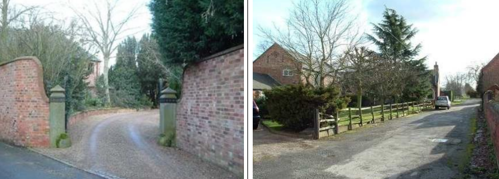
Figure 17 - Timber fencing at Holme Farm
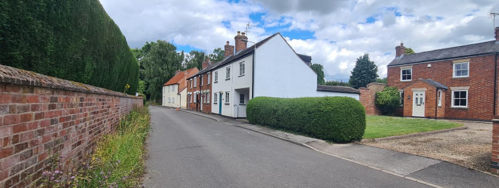
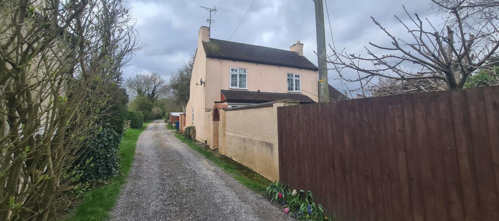
5 Buildings of the Conservation Area and Key Characteristics
5.1 Building Types and Activity
The older buildings in Costock mainly consist of a mixture of farmhouses, cottages, barns and outbuildings and country houses. Many of these can be seen on the historical maps shown in 4.1. The Conservation Area also contains a number of more modern dwellings which are mostly to be found along the southern side of Main Street.
While there have been new developments within the village, the flood alleviation mounds and ditches and been maintained to prevent flooding of surrounding land.
5.1.1 Building types and Activity SWOT Analysis
Strengths - what activities/places can you go that make the village/town great?
- Pinfold with bench.
- Church service every Sunday, and ongoing.
- Active village hall which is a social centre of the village.
Weaknesses - what activities/places exist that detract from making the village/town great?
- A60 creates a barrier within the village.
- Increase in traffic along Main Street from the A60 combined with significant number of on street parking.
- A60 Layby just outside of the conservation area is often used for fly tipping.
Opportunities - what activities/places could exist that would village/town even better?
- None listed.
Threats - what activities/places would make village/town worse?
- The parked cars along Main Street and the potential for more accidents.
- The succession of landlords to the Pub and the viability of the Pub in the future.
- Hard landscaping contributing to the increase in flooding risk.
5.2 Key Characteristics and Building Materials
Building materials were largely locally sourced. Bricks for example, were not transported far from where they were made, with each village having its own brick pit and yard. This led to interesting village-specific sizes, colours and styles of brickwork. Roofs would have been made from local materials such as thatch until clay pantiles became popular.
5.2.1 Key Characteristics: Historic Core - Zone 1
The Historic Core of Costock, is a distinctive and historically significant area of the Conservation Area, anchored by the Church and churchyard of St. Giles and an Elizabethan Manor House. The area is characterised by its enclosed feel, narrow lanes, and the close-knit arrangement of buildings, which together contribute to a unique yet charming atmosphere.
Materials:
Walls: Dominated by orange/red brick, usually in Flemish bond which sometimes creates a chequered pattern. Blue brick is occasionally used as a decorative accent. Some brick buildings have rubble stone plinths. There are also a handful within this character area that are built entirely in stone. Several buildings have rendered or painted walls.
Roofs: Dominated by slate tiles with some examples of orange clay pantiles and plain tiles. Almost all of Costock’s buildings have gable ends that are plain close verge where the tiles run to the edge of the brick gables.
Windows: Mostly timber casements and sliding sashes in a variety of configurations with many creating a symmetrical façade and having glazing bars. There are also examples of stone mullioned and transomed windows. Stone or arched brick lintels are most prominent.
Doors: Timber plank and batten panelled and part glazed are commonest types. Larger properties have decorative porticos, and most have iron door furniture.
Key Characteristics / Architectural Features:
At the heart of this character area is St. Giles Church which is Grade II listed with origins in the 14th century. It has undergone various
restorations in 1688, 1848 by G.G. Place, and further in 1862 by Gilbert Scott. The building showcases a combination of dressed coursed rubble and some ashlar, topped with slate roofs. The architectural style is predominantly Gothic, featuring elements such as coped gables with ridge crosses, buttresses, and a variety of window designs with cusped tracery.
Another building which contributes to the historic narrative of the area is the Manor House (Grade II* Listed). The Elizabethan Manor house and attached Chapel, (now converted for domestic use), is late 15th Century, with some late 17th Century, early 18th Century, 19th Century and 20th Century alterations.
5.2.2 Key Characteristics: Main Street - Zone 2
Materials:
Walls: While orange/red brick is dominant within this character area, Flemish bond is less common. Similar to the historic core, several buildings have rendered or painted walls, however buildings constructed entirely of stone are less visible.
Roofs: Dominated by slate with examples of orange clay pantiles and some plain tiles. Many of the roofs are plain close verge.
Windows: Most of the traditional materials are timber casements in a variety of configurations with many creating a symmetrical façade and having glazing bars. There are a number of arched and segmental arched windows.
Key Characteristics / Architectural Features:
The area features a mix of older cottages, houses, and modern infill developments. It is characterised by low brick walls and hedgerow borders, substantial rear gardens, and fringes of countryside to the south. Additionally, there is a 19th-century school building that now serves as the village hall.
5.2.3 Key Characteristics: Loughborough Road and Old Main Road - Zone 3
Materials
Walls: Walls predominantly brick, however most painted or rendered with white or near white, neutral tones.
Roofs: Predominately clay pantile with a few examples of slate. While many of the roofs are plain close verge, similar to the historic core, there are also examples of parapet gables within this character area.
Key Characteristics / Architectural Features
Road junction with wide grass verges and hedgerow lined approaches to village. Cluster of traditional farmhouses and cottages fronting onto Old Main Road.
The majority of the boundary treatments are hedgerows.
5.2.4 Key Characteristics SWOT Analysis
Strengths - what is it about most existing buildings that looks good / contributes to the character of the area?
- The historic cottages are easily identifiable and maintain their visibility within the conservation area.
- There are a number of buildings which use Flemish bond brickwork in a diamond pattern which creates visual interest. There are also some buildings that are partially made of stone on the lower courses.
Weaknesses - what is it about most existing buildings that does not look good / detracts from the character of the area?
- None listed
Opportunities - what could make existing buildings (or new builds) look good and contribute to the character of the area?
- None listed
Threats - what could make existing buildings (or new builds) look worse and detract from the character of the area?
- None listed
5.3 Listed buildings
Buildings on the Government’s List of Buildings of Special Architectural or Historic Interest are called “Listed” buildings and are protected by law. Consent is required from Rushcliffe Borough Council before any works of alteration, extension, or demolition can be carried out on any listed building.
Further information can be found in Rushcliffe Borough Council’s Listed Buildings in Rushcliffe.
The complete list of the Secretary of State’s Statutory List of Buildings of Special Architectural Interest or Historic Interest.
Names of the Listed Buildings and structures in Costock Conservation Area (correct as of December 2023) are detailed in Appendix 1. All Listed Buildings are shown on the Townscape Appraisal plan, but some smaller structures such as gravestones may not be shown.

Cherry Tree Cottage - brick walled barns with parapet gable ends and pantiled roofs.
6 Chapel Lane - Chequered Flemish bond brickwork. The farmhouse has timber sliding sash windows with stone sills and rendered white painted walls. lintels, slate roofs and part glazed timber door.
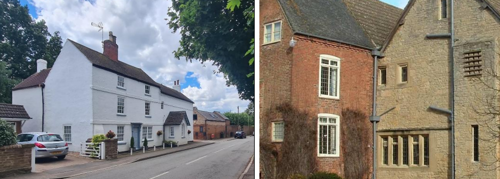
The White House - Rendered and painted walls with string courses at floor levels, Georgian style timber sliding sash windows with stone sills and a panelled timber door with decorative stone surround.
Hall Farm House - 17th century rubble stone walls with stone mullioned windows and a dovecote alongside an 18th century brick extension with larger timber casement windows, arched brick lintels, corbelled eaves and plain tile roof.
5.4 Key Unlisted Buildings
Contribution to the established character of the place can also come from buildings which are not recognised via listing, or are not old. A plan with all of the positive contributions to the area can be found in Appendix 2 - Conservation Area Boundary and Townscape Appraisal Map.
The Costock Conservation Area includes a number of unlisted buildings that make a positive contribution to the character and appearance of the Conservation Area. This may be because of their age, architectural style, former function, or general contribution to the variety of the townscape. Key unlisted buildings are highlighted in the Townscape Appraisal in Appendix 2 and some examples of these are shown in the photographs below. However it is important to stress that nearly all the buildings within a Conservation Area can make a positive contribution to the townscape in some way.

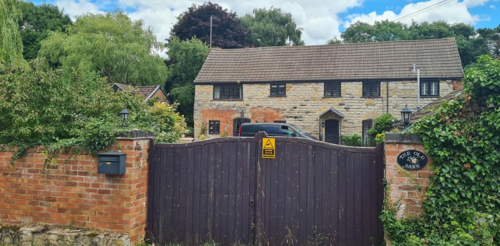

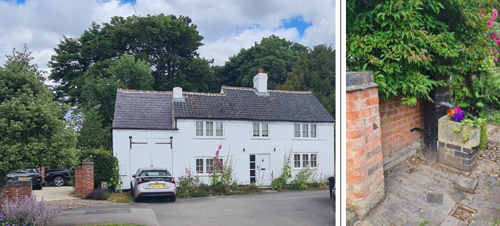
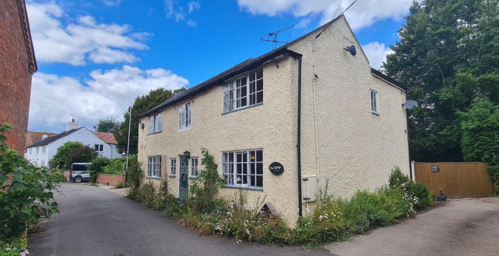
6 Generic Management Plan for Conservation Areas in Rushcliffe
6.1 Introduction
In carrying out its planning functions, the Borough Council is required in law to give special attention to the desirability of preserving or enhancing the character or appearance of Conservation Areas. The Management Plan for a Conservation Area is a tool to ensure the special character of the area is preserved and enhanced. The management plans aim to:
- Outline a strategic management proposal for the preservation and enhancement of the Costock Conservation Area.
- Act as a guide for professionals and residents alike regarding:
- features of value, worthy of preservation;
- characteristics worthy of preservation;
- opportunities for enhancement;
- development proposals which preserve and enhance the special character of the area.
- Inspire community commitment to conservation principles and reporting.
6.2 National and Local Policies and Guidance
There is a duty to formulate and publish management plans setting out policies and proposals for the preservation and enhancement of Conservation Areas. Many of these policies and proposals are common to all Conservation Areas, and these are set out in this document. The Central Government Guidance and Local policies applicable to Conservation Areas include:
- Rushcliffe Local Plan Part 1: Core Strategy, with a specific focus on:
- Design and Enhancing Local Identity [in part]
- Historic Environment
- Rushcliffe Local Plan Part 2: Development Policies, with a specific focus on:
- Conserving and Enhancing Heritage Assets
- Development Affecting Archaeological Sites
- The National Planning Policy Framework (NPPF), particularly, but not exclusively the chapter on Conserving and Enhancing the Historic Environment.
- The National Planning Practice Guidance (NPPG) (updated 2021 and subject to continual review)
- By Design: Urban Design in the Planning System – Towards Better Practice (2000)
- The Planning (Listed Buildings and Conservation Areas) Act 1990
- Historic England “Historic England Advice Note 1: Conservation Area Designation, Appraisal and Management”
The council will utilise the full range of strategic policy and guidance documents to ensure that development in Costock Conservation Area is of a standard that enhances the amenity of the local area. The council will always look to use the most up-to-date versions of the document.
Supplementary documents may be issued for individual Conservation Areas where specific policies or proposals are needed.
6.3 Article 4 Directions
There are extra consents required in Conservation Areas. For example, in addition to the general control of development, you will
need to get permission for
- Any additions or alterations to the roof (for example, dormer windows)
- The installation of satellite dishes on chimneys, roofs or walls fronting a highway
- Any extension which extends beyond the side of the original dwelling house
- Any extension of more than one storey that extends beyond the rear wall of the original dwelling house
- Cladding the exterior of the dwelling
- Any demolishing of a building or part of a building that has a volume over 115 cubic metres
Article 4 of the Town and Country Planning (General Permitted Development) Order 1995, allows planning authorities to restrict
some permitted development rights within particular areas. This does not necessarily prevent development or change taking place
but enables the Local Authority to manage the design and detailing of the works, and potentially grant permission subject to appropriate conditions. The use of Article 4 Directions will be proposed where it is considered appropriate following the completion of each Area Appraisal across the Borough.
Details of Article 4 Directions for Costock Conservation Area
There are currently no Article 4 Directions for Costock Conservation Area.
6.4 Building Design
Mimicking the local vernacular is not the only way to ‘fit in’ with the character of a conservation area. National policy makes clear that contemporary designed, provided it is sympathetically designed, cannot be dismissed as an option. Therefore, good contemporary design will be encouraged where it respects the context’s character, scale and massing. This must be demonstrated in the Design and Access Statement submitted with any planning application.
Extensions to buildings in Conservation Areas should respect:
- The key characteristics of the original building, including scale, mass, materials and proportions
- The contextual setting and character of the Conservation Area
Copying like for like can devalue and destroy the ability to “read” historic change, and dilutes our historic heritage. Pastiche designs, incorporating poor imitations of other styles, will be resisted, particularly where they incorporate details which are not locally appropriate. Careful high-quality replication may be required in a few very sensitive locations.
In particularly sensitive locations, such as uniform terraces, exact replication may be necessary to maintain compositional unity. In that case, attention to details, choice of materials and high-quality workmanship are the keynotes. However, in some cases, a direct relationship is not impossible. For example, Flemish Bond brickwork cannot be replicated in cavity walls, and narrow lime mortar joints cannot be replicated in modern metric brickwork.
Where a new building is appropriate, on infill sites or where an existing building detracts from the character of the area, the opportunity should be taken to re-establish the streetscape, reinforce enclosure, open up distant vistas or views of landmarks or hide unsightly views.
“New and old buildings can coexist happily without disguising one as the other, if the design of the new is a response to urban design objectives” (DETR – “By Design”, p19).
As with extensions, good contemporary design which respects local character, and the context of the site will be encouraged.
All new buildings should respond appropriately to the existing frontage and normally follow the established building line. Development or redevelopment will normally be resisted if:
“it blocks important views identified in the individual appraisals, uses important open spaces identified in the appraisals, adversely affects the setting of any Listed or key buildings, fails to maintain or re-establish the streetscape where appropriate dominates its Conservation Area background fails to recognise the context of
the site destroys important features identified in the individual appraisals such as boundary walls, fences,
hedgerows or trees”
Where the quantity of contemporary schemes in a small area becomes significant and outnumbers older buildings within the area, further contemporary schemes could fundamentally shift the architectural character of the area and thus be harmful, even if well designed as an individual project.
New development that stands out from the background of buildings may be appropriate in exceptional circumstances if it contributes positively as a landmark to enhance the street scene, to highlight a corner or to signal a visual change of direction such as along a curving vista.
Any external lighting should be carefully designed and sited to minimise light pollution.
Energy producing or saving devices are generally welcomed by the Council, but careful consideration is required when these are to be located in a Conservation Area and some may require planning permission. In particular, they should be positioned to minimise their impact on the building and on the local amenity.
6.5 Publicity and Knowledge Transfer
Ambiguity about additional controls within a Conservation Area raises the likelihood of inappropriate developments occurring which
may damage the integrity of the conservation area designations.
Efforts have been made to engage local community groups in the development and review of the character appraisals. Empowering
communities to define the special architectural and historic interest of the Conservation Area aims to raise awareness.
Whether the appraisal took a community-led or a council-led approach, upon reviewing all Conservation Areas, the public were invited to ask questions and comment during a public consultation. A consultation event also aimed to diminish any ambiguity about
restrictions within a Conservation Area and increase the likelihood of sensitive and appropriate developments, maintaining the character
of the area.
The council recognise the potential issues of turnover in residency and ownership of properties in the conservation area. Therefore,
Rushcliffe Borough Council will periodically use their media outlets to highlight conservation area designations and the significant,
related planning controls.
The approach taken within Costock Conservation Area was a [Community Led / Council Led]
The consultation period took place between the following dates....
The date of the Consultation Event...
If there are any queries about conservation areas, please email conservationareas@rushcliffe.gov.uk
6.6 Public Realm
General maintenance and upkeep to the public realm may include fixing damage to roads and pavements, and fixing issues with street lighting. Issues such as these can impact the quality of the Conservation Area.
The council aims to encourage works to the public realm that are in keeping with, or actively enhance the conservation area. Rushcliffe Borough Council can only advise on work within the public realm that does not require planning permission (for example work completed by statutory undertakers, such as the Highways Authority). In these instances, Rushcliffe borough council cannot prevent such work.
Nottinghamshire County Council are responsible for repairs to roads, pavements and street lighting. Report issues of repairs to roads, pavements and street lighting to Nottinghamshire County Council online.
Rushcliffe Borough Council will continue to undertake their duties in maintaining the public realm. Vandalism, fly tipping and street cleaning are all the responsibility of Rushcliffe Borough Council. Report issues to Rushcliffe Borough Council online.
You must contact the Local Planning Authority (LPA), Rushcliffe Borough Council, before any works (cutting OR pruning) are carried out to trees within the Costock Conservation Area
Six weeks’ notice is required before any works to trees within the Conservation Area is carried out, even if they are not protected by Tree Preservation Order (TPO).
Standard notification forms (a section 211 notice) - further information and contact details.
A flow chart of the decision-making process regarding works to trees.
6.7 Boundary Treatments
Where there is a proposal for a new boundary treatment to be installed, the council would encourage the use of boundary treatments within the area.
Within conservation areas, planning permission is required to alter, maintain, improve, take down or build any new gate, fence, wall or other enclosure with:
- A height of one metre or more if next to a highway (including a public footpath or bridleway), waterway or open space; or
- A height of two metres or more elsewhere.
Where planning permission is required to remove a wall, Rushcliffe Borough Council will aim to protect those boundary walls and fences that have been identified as positively contributing to the area.
Hedgerows are significant habitats for wildlife in lowland Britain. Regulations are intended to protect important hedges in the countryside. The policy applies to hedges that are more than 20m long, (or less if connected to another hedge) on or adjacent to:
- Land used for agriculture or forestry, including the keeping of horses or donkeys
- Registered common land and village greens
- Local Nature Reserves and Sites of Special Scientific Interest.
The policy does not apply if the hedge is within or on the boundary of the curtilage of a house.
6.8 Buildings at risk
A few of the important buildings across the various Conservation Areas are currently vacant or not in regular use, which may lead to some being “at risk” of neglect or decay.
The Council will encourage and advise on renovation and repair work that is sensitive to the original or traditional historic character of the building and retains original features. The council will monitor the opportunity and potential for grant aid schemes to encourage the basic maintenance work necessary to ensure that key buildings within the conservation area are structurally sound and weather tight. However, given the current financial climate and outlook, such schemes are unlikely in the short to medium term.
There is a presumption against the demolition of buildings which contribute to the character of the area unless there are exceptional circumstances. It would benefit both the physical form and the function of the Conservation Area if these buildings were repaired, maintained and brought back into use.
Where the poor condition of a building or structure is as a result of neglect and lack of maintenance by its owner there is no requirement for the Borough Council to take its deteriorated condition into account when deciding whether demolition is appropriate. This is to avoid rewarding the deliberate neglect of buildings by representing such action as a way to obtain planning permission for demolition and redevelopment.
6.9 Enforcement
Rushcliffe Borough Council will, from time to time, assess and monitor changes in the appearance and condition of Costock Conservation Area. This will ensure that where necessary enforcement action can be taken promptly to deal with problems as they arise.
Where co-operation cannot be gained by any other means, Rushcliffe Borough Council has the ability to use additional enforcement powers to tackle particular issues within conservation areas. The Council may take formal action if the condition of any building (listed or unlisted) which makes a positive contribution to the character of the Conservation Area is considered to be at risk.
The council will work in accordance with their enforcement policy, which aims to provide an efficient enforcement service in support of the Council’s statutory planning service. Rushcliffe Borough Council’s enforcement actions will remain transparent, consistent, and proportionate, as it is recognised that effective controls over unauthorised development assists in conserving the natural and built environment whilst helping to protect the quality of people’s lives and maintaining the Council’s integrity.
7 Appendix 1 – Listed Buildings
Church of St Giles
Grade: II
Listing entry number: 1241942
National grid reference: SK 57439 26463
Location: Church of St Giles, Church Lane
The Hall Farmhouse
Grade: II
Listing entry number: 1241943
National grid reference: SK 57523 26486
Location: The Hall Farmhouse, Chapel Lane
Cherry Tree Cottage and Attached Outbuildings
Grade: II
Listing entry number: 1241950
National grid reference: SK 57677 26308
Location: Cherry Tree Cottage and Attached Outbuildings, Old Main Road
White House
Grade: II
Listing entry number: 1241945
National grid reference: SK 57464 26339
Location: White House, Main Street
Fulwell Farm House
Grade: II
Listing entry number: 1260276
National grid reference: SK 57438 26397
Location: Fulwell Farm House, Main Street
The Manor House
Grade: II
Listing entry number: 1260272
National grid reference: SK 57386 26402
Location: The Manor House, Church Lane
Pomerania
Grade: II
Listing entry number: 1241941
National grid reference: SK 57390 26481
Location: Pomerania, Church Lane
*The titles of these listings may not make it clear that all listed buildings always include all attached structures and extensions, regardless of age, and all detached outbuildings built before 1 June 1948 which are, or were at the time of listing, ancillary to the function of the primary listed building and were in the same ownership at the time of listing.
For example, when a house is listed, the listing will apply to extensions, porches, detached historic stables, barns, wash houses, privies etc. Such outbuildings and extensions are only exempt from the provisions of listing where the listing specifically excludes them. Appendix 2 - Conservation Area Boundary and Townscape Appraisal Map.
8 Appendix 2 – Conservation Area Boundary and Townscape Appraisal Map